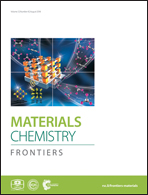Design and preparation of quasi-spherical salt particles as water-soluble porogens to fabricate hydrophobic porous scaffolds for tissue engineering and tissue regeneration†
Abstract
The design and preparation of appropriate porogens are critical in the fabrication of porous scaffolds for tissue engineering and tissue regeneration. Our analysis based on percolation theory reveals that a spherical porogen is better than a cubic porogen. Nevertheless, while porous scaffolds with spherical interior pores have exhibited advantages over those of cubic pores, salt as the most popular and convenient porogen can only be shaped cubically due to the principle of crystallography. Hererin, we propose a strategy to prepare, indirectly, quasi-spherical salt macroparticles simply via gluing small salt particles by sugar melt. The popular biodegradable polymer poly(D,L-lactide-co-glycolide) (PLGA) was employed as the hydrophobic matrix, and polymeric scaffolds with quasi-spherical pores were successfully fabricated by room-temperature compression molding and particulate leaching. Compared to PLGA scaffolds fabricated by conventional cubic salt macroparticles, our improved scaffolds exhibited excellent pore interconnectivity and fewer porogen residues. Two additional advantages of the new fabrication approach were also found: one is quicker porogen leaching by water in the fabrication of PLGA scaffolds, which might be owing to easier water penetration into the intervals of these microparticles; the other is favourable cell adhesion and osteogenic differentiation on the pore wall, which might be attributed to the rough interior surfaces templated from the porogen surfaces composed of many microparticles. The new approach and resultant scaffolds are promising in regenerative medicine.



 Please wait while we load your content...
Please wait while we load your content...